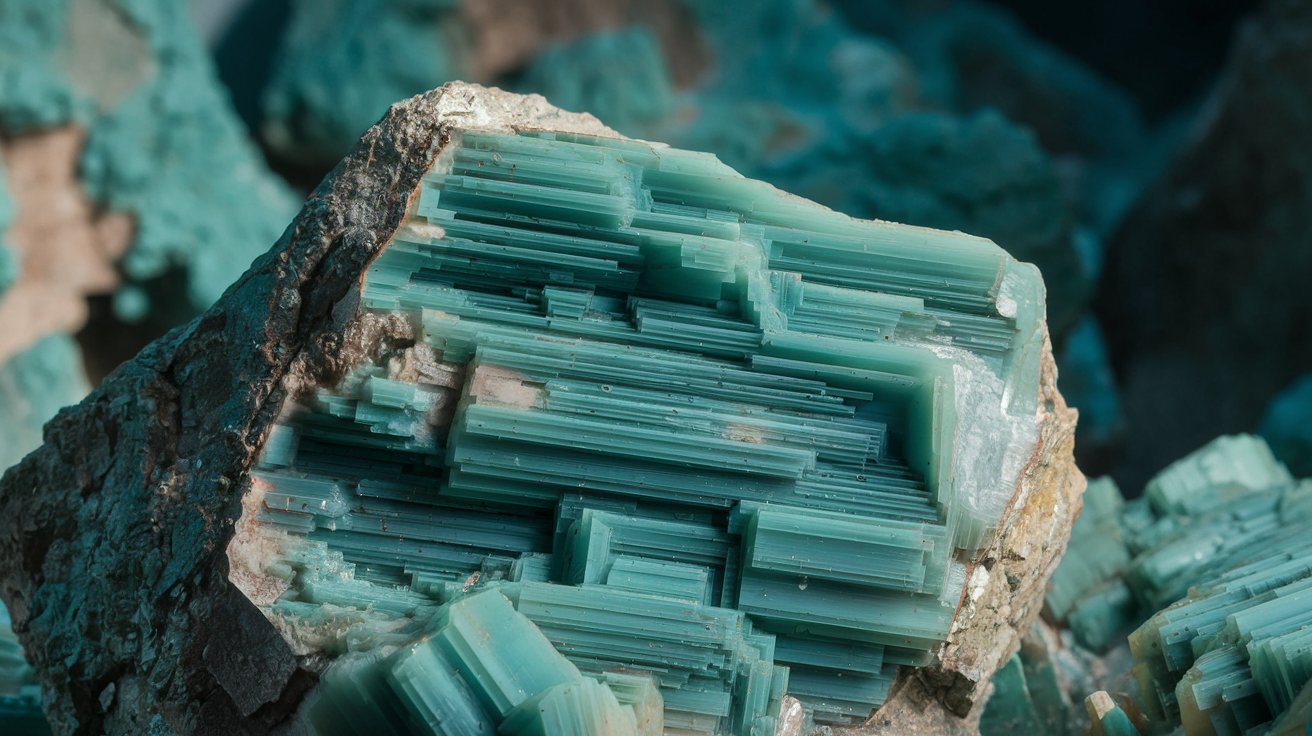
Fraipontite is a rare mineral that often intrigues collectors and geologists alike. But what exactly makes it so special? Fraipontite is a zinc aluminum silicate hydroxide mineral, typically found in oxidized zinc deposits. Its unique greenish hue and fibrous structure make it a standout in any mineral collection. Named after Belgian geologist Julien Fraipont, this mineral has a fascinating history and a distinct chemical composition. Whether you're a seasoned geologist or just curious about minerals, learning about Fraipontite can be both educational and exciting. Ready to dive into some intriguing facts about this captivating mineral? Let's get started!
Key Takeaways:
- Fraipontite is a rare mineral named after a Belgian mineralogist. It's often found in zinc and copper deposits and has unique physical properties, making it a favorite among mineral collectors and a subject of scientific research.
- Despite its rarity, Fraipontite has significant geological significance in understanding zinc and copper deposits. It is also used in educational settings to teach about silicate minerals and is a favorite among micromount collectors for its unique properties.
What is Fraipontite?
Fraipontite is a rare mineral that belongs to the silicate group. It is often found in zinc and copper deposits. This mineral is named after Belgian mineralogist Julien Fraipont.
- Fraipontite is a zinc aluminum silicate hydroxide mineral.
- It was first discovered in the Belgian region of Vieille Montagne.
- The mineral is named after Julien Fraipont, a Belgian mineralogist.
- Fraipontite typically forms in fibrous or massive habits.
- It often appears in green, blue, or white colors.
Chemical Composition and Structure
Understanding the chemical composition and structure of Fraipontite helps in identifying and studying this mineral.
- Fraipontite's chemical formula is (Zn,Al)3(Si,Al)2O5(OH)4.
- It belongs to the kaolinite-serpentine group of minerals.
- The mineral has a monoclinic crystal system.
- Fraipontite's crystals are usually microscopic and not easily visible to the naked eye.
- It has a Mohs hardness of 2.5 to 3, making it relatively soft.
Occurrence and Locations
Fraipontite is not commonly found everywhere. Its occurrence is limited to specific geological environments.
- It is often found in oxidized zones of zinc and copper deposits.
- Fraipontite is commonly associated with other minerals like smithsonite and hemimorphite.
- Significant deposits of Fraipontite have been found in Greece, Namibia, and the United States.
- In the United States, notable locations include New Jersey and Arizona.
- The mineral is also found in Tsumeb, Namibia, which is famous for its diverse mineralogy.
Physical Properties
The physical properties of Fraipontite make it unique and distinguishable from other minerals.
- Fraipontite has a vitreous to silky luster.
- Its specific gravity ranges from 3.3 to 3.5.
- The mineral exhibits a perfect cleavage in one direction.
- Fraipontite is translucent to opaque.
- It has a white streak when rubbed on a porcelain plate.
Uses and Applications
While not widely used in commercial applications, Fraipontite has its significance in various fields.
- Fraipontite is primarily of interest to mineral collectors.
- It is studied for its geological significance in understanding zinc and copper deposits.
- The mineral can be used in educational settings to teach about silicate minerals.
- Fraipontite's unique properties make it a subject of scientific research.
- It is sometimes used in gemology for its aesthetic appeal, although rarely.
Interesting Facts
Here are some intriguing tidbits about Fraipontite that might surprise you.
- Fraipontite can sometimes be mistaken for chrysocolla due to its similar color.
- The mineral's name is often mispronounced; it is correctly pronounced as "fray-pont-ite".
- Fraipontite can form pseudomorphs, where it replaces another mineral while retaining the original mineral's shape.
- It is often found in microcrystalline form, making it a challenge to study without specialized equipment.
- Despite its rarity, Fraipontite is a favorite among micromount collectors who specialize in tiny mineral specimens.
Fascinating World of Fraipontite
Fraipontite, a zinc-aluminum silicate mineral, holds a unique spot in the mineral kingdom. Found in regions like Namibia and the United States, it often appears in botryoidal or fibrous forms. Its greenish hue, caused by trace amounts of iron, makes it visually striking. This mineral forms in hydrothermal veins and is associated with other minerals like smithsonite and hemimorphite.
Collectors and geologists value fraipontite for its rarity and beauty. It's not just a pretty face; its formation process offers insights into geological conditions. Despite its lesser-known status, fraipontite's unique properties and formation make it a subject of interest for mineral enthusiasts.
Next time you come across a greenish mineral, remember fraipontite. Its story is a testament to the Earth's incredible geological diversity. Keep exploring, and who knows what other fascinating minerals you'll discover.
Frequently Asked Questions
Was this page helpful?
Our commitment to delivering trustworthy and engaging content is at the heart of what we do. Each fact on our site is contributed by real users like you, bringing a wealth of diverse insights and information. To ensure the highest standards of accuracy and reliability, our dedicated editors meticulously review each submission. This process guarantees that the facts we share are not only fascinating but also credible. Trust in our commitment to quality and authenticity as you explore and learn with us.
